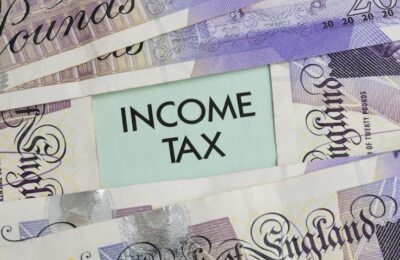According to a Freedom of Information request, the HMRC surveillance team almost doubled in size between 2023 and 2025. In this article, we look at what’s happened, what the HMRC surveillance team does and other surveillance powers available to the taxman.
What’s the story about HMRC’s surveillance team?
According to a story in City AM on 9th September 2025, 337 HMRC staff are now trained in covert surveillance. This is up from 171 employees in 2023.
In addition to this, a further 196 staff underwent criminal foundation training. Over 2,000 were also trained in personal safety.
These numbers suggest that HMRC is getting even more ‘hands on’ when it comes to rooting out tax dodgers.
What powers does HMRC’s Covert Surveillance Team have?
HMRC’s covert surveillance team has a range of powers, depending on circumstances. These include:
- Physical monitoring of premises. For example, HMRC agents may visit premises covertly to monitor things like opening times, the number of staff and customers, the way cash is handled and how customers pay.
- Test purchases. Agents can undertake test purchases of goods or services, particularly if they suspect a trader is not declaring the full extent of their takings. This allows them to gather evidence about how a business operates.
- ‘Drive-bys’. Agents can drive by premises or properties to conduct surveillance. They might note vehicles or gather evidence of individuals entering or leaving.
According to press reports, these are the key powers held by HMRC’s covert surveillance team. They are deployed to gather ‘real-world’ evidence on individuals and businesses suspected of not paying their full share of taxes. Covert surveillance is regulated by the Regulation of Investigatory Powers Act 2000 (RIPA).
However, as you’ll know if you’ve read our piece on HMRC Connect, the taxman has a wide range of other surveillance powers and abilities. HMRC surveillance powers are spread across a range of different departments, and they can usually only be used in certain situations. Let’s look at some of them to give you a broad idea of what the taxman can do.
Telecoms surveillance
When HMRC is conducting tax investigations, it can – thanks to the Investigatory Powers Act 2016 – request data about phone calls. However, it cannot get information about what was said on a call (or eavesdrop on a call) without the express permission of the Secretary of State. It can also request copies of text and media messages sent between phone numbers.
Digital surveillance
In some circumstances, HMRC can track an individual’s web browsing. With a warrant, agents can also read private emails.
More intrusive HMRC surveillance
In very serious cases, HMRC can get the authority to bug premises, private houses or cars. It can also access financial information. This allows it to compare things like spending habits and income with details provided on tax returns.
Automated HMRC surveillance
The types of surveillance we’ve covered so far involve HMRC staff monitoring the affairs of individual people and businesses. This happens when HMRC has good reason to believe tax evasion is taking place.
However, in an age of automation and AI, it’s simpler than ever for the taxman to spot unusual financial patterns. HMRC Connect, mentioned above, can cross reference billions of items of data, such as bank and savings records, credit card payments, DVLA and Land Registry records, social media posts, plus activity on online platforms such as eBay and Airbnb. If the system spots that your lifestyle or financial habits aren’t reflected in your tax returns, then it is likely to open an investigation into your affairs. This is when you could end up under direct surveillance.
Of course, the best way to avoid HMRC surveillance is to be open and accurate in your tax affairs. A good accountant like THP can help you do this. However, HMRC will sometimes open an investigation into your tax affairs based on faulty information or simply as a spot check. If this happens, the process can often be time consuming and expensive. To minimise disruptions, we strongly recommend out Tax Investigation Fee Protection Service. If you have this and the taxman comes knocking, it could cover our fees up to an upper limit of £100,000 – giving you peace of mind.
About Jon Pryse-Jones
Since joining THP in 1978, Jon Pryse-Jones has been hands on with every area of the business. Now specialising in strategy, business planning, and marketing, Jon remains at the forefront of the growth and development at THP.
An ideas man, Jon enjoys getting the most out of all situations, “I act as a catalyst for creative people and encourage them to think outside the box,” he says, “and I’m not afraid of being confrontational. It often leads to a better result for THP and its clients.”
Jon’s appreciation for THP extends to his fellow team members and the board. “They really know how to run a successful business,” he says. He’s keen on IT and systems development as critical to success, and he continues to guide THP to be at the cutting edge and effective.
Read more about Jon Pryse-Jones More posts by Jon Pryse-Jones












